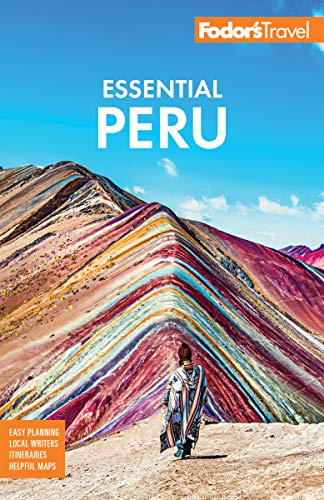Car
In general, it's not a great idea to rent a car in Peru. Driving is a heart-stopping experience, as there seem to be unwritten traffic rules that you have to be from here to know. That said, there are a few places in Peru where having a car is a benefit, such as between Lima and points south on the Pan-American Highway. The highway follows the Pacific Ocean coastline before it cuts in through the desert, and stops can be made along the way for a picnic and a swim at the popular beaches around Asia at Kilometer 100. The highway is good, and although there isn't too much to see along the way, it's nice to have the freedom a car affords once you get to your destination.
If you do rent one, keep these tips in mind: outside cities, drive only during daylight hours, fill your gas tank whenever possible, make sure your spare tire is in good repair, and pay extra attention on mountain roads. In some areas, drivers caught using a cell phone receive a hefty fine.
Massive road-building programs have improved highways. Nevertheless, even in some parts of Lima, roads are littered with potholes. Beyond the urban centers, both street signs and lighting can be rare, and lanes may be unmarked. Roads are straight along the coast, but in the mountains, they snake around enough to make even the steadiest driver a little queasy. Fuel is pricey in Peru, with a gallon costing around US$3.85.
The major highways in Peru are the Pan-American Highway (Panamericana in Spanish), which runs down the entire coast; the Carretera Central, which runs from Lima to Huancayo; and the Interoceánica, which runs from Lima to Cerro de Pasco and on to Pucallpa before crossing through Brazil to the Atlantic Ocean. Most highways have no names or numbers; they're referred to by destination.
Car Rental
The minimum age for renting a car in Peru is 25, although some agencies offer rentals to younger drivers for an additional fee, and a credit card is required. All major car-rental agencies have branches in downtown Lima as well as at Jorge Chávez International Airport that are open 24 hours. You can also rent vehicles in Arequipa, Chiclayo, Cusco, Piura, Puno, Tacna, and Trujillo.
The cost of rental cars varies widely but is generally between US$30 and US$60 for a compact, US$80 to US$100 for a full-size car or small SUV. A daily US$10 to US$20 collision damage waiver may be added to your bill.
Driving
Speed limits are 30 kph–60 kph (18.5 mph–37 mph) in residential areas, 80 kph–100 kph (50 mph–62 mph) on highways. Traffic tickets range from a minimum of US$12 to a maximum of US$120. The police and military routinely check drivers at roadblocks, so make sure your papers are easily accessible. Note that laws, especially outside big cities, can be left to the discretion of the officer, so be polite and respectful at all times. Peruvian law makes it a crime to drive while intoxicated, although many people ignore that prohibition (as everywhere).
Roadside Emergencies
The Touring y Automóvil Club del Perú will provide 24-hour emergency road service for members of the American Automobile Association (AAA) and affiliates upon presentation of their membership cards. (Towing is free within 30 km [18 miles] of several urban areas.) Members of AAA can purchase good maps there at low prices.




